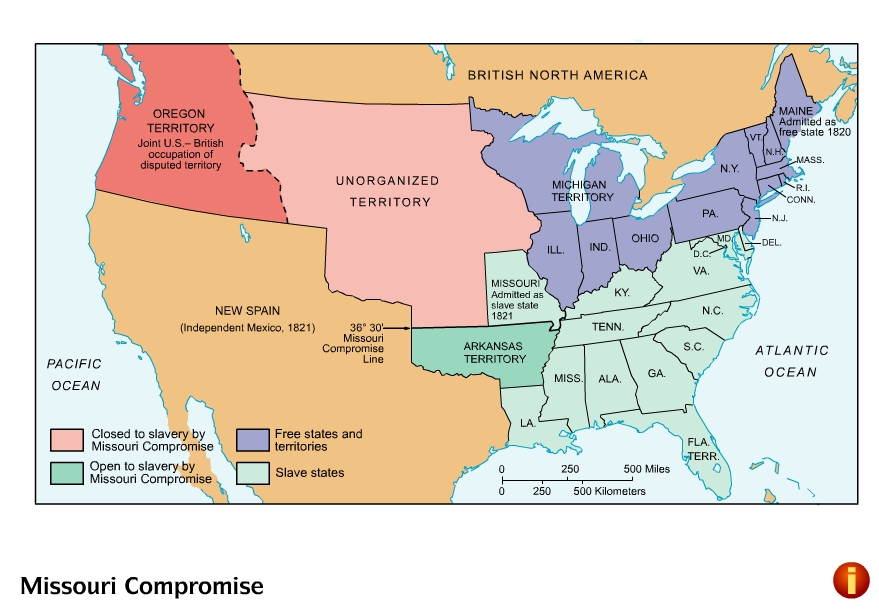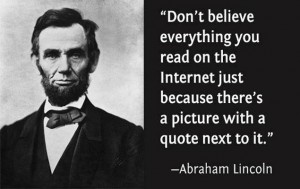There has been a meme floating around to advocate voting for a third party candidate by saying that Lincoln was a third party candidate and those votes weren’t wasted. I hate to be the one to burst everyone’s bubble, but Lincoln was not a third party candidate. Bruce Catton’s book The Coming Fury has a somewhat dry, but excellent accounting of the election that preceded the outbreak of the Civil War. However, if reading a long book about history isn’t your idea of fun, here’s my summation.
The Whig party, Lincoln’s original party, began to split in the 1850’s and that is when the Republican Party came into existence. Please note, at that time Republicans were liberal and Democrats were conservative. The Whig split was due in large part to opinions about slavery. Despite what I was taught as a kid, the Civil War was not fought over whether the slaves should be freed. Lincoln introduced that objective with the Emancipation Proclamation which went into effect mid-war, in 1863. This was an attempt to give Northerners who were growing weary of the fighting a rallying cry that they could gather around. Not to mention, cutting off any possible support for the South from abolitionist countries like England. But that’s a totally different conversation, so let’s get back to before the war even started. Among other factors, the Civil War was fought over the possible expansion of slavery and the right of the Federal government to control slavery.
In the 1850’s, leading into the 1860 election, the hot button topic was whether or not slavery should be allowed in new territories and then subsequent states as they were established. As well as the enforcement of fugitive slave laws. The extreme liberals, who were a minority, wanted complete abolition. However, most liberals were content if slavery stayed in the South, wasn’t allowed to expand into new territories, and remained under the jurisdiction of the Federal government. See the Missouri Compromise map below.
The Conservatives wanted the fugitive slave laws more strictly enforced and an amendment to be passed stating that the Federal government had no authority to ever abolish slavery – or “the peculiar institution” as they called it. The extreme conservatives, or “Fire-Eaters” as they were branded, wanted all of that and assurances that any new territory that fell South of the Mason-Dixon Line would become a slave state. This is a simplification obviously, but this is the main issue that split, then dissolved the Whig Party by the 1852 and 1856 election respectively. This opened the stage for the Republican Party to form.
With the dissolution of their party, many Whigs stepped out of politics for a while, if not permanently, and/or changed parties. Northern Whigs tended to gravitate to the new Republican Party. Deep-south Whigs went to the Know Nothing Party, upper-south Whigs went to the Constitutional Union Party and those remaining filtered over to the Democrats. The Know Nothing Party was only prominent for a few years and their stances were based mainly on the beliefs that Irish Catholic and German immigrants were ruining America – some sentiments never change. The Constitutional Union Party was anti-secession and believed that the Constitution was the first and final word for all governing. They hoped that by not taking a stand as either pro or anti-slavery, the whole issue would go away. Their party pretty much dissolved completely with secession.
By 1860, the Whig party was all but gone. Lincoln ran under the Republican ticket, however, he was far from a favorite. The people running his campaign though, were very smart. They realized that there were so many hot button topics that anyone who drew large amounts of attention wouldn’t be able to get elected. William Seward was so outspoken that it would be nearly impossible for him to get a majority vote at the convention. However he was going to lead the first vote because he did have quite a bit of popularity. So Lincoln’s campaign manager – at this point in time the candidates themselves didn’t go out on the campaign trail, they stayed home – made agreements with several crucial states that when the second or third vote came around they would switch their vote to Lincoln. They did the same with states backing Salmon Chase. So by playing up the underdog card, they were able to sway enough states who voted for Seward or Chase in the first and second vote to switch to Lincoln by the third vote. Thus, Lincoln gained a majority and won the convention nomination.
Meanwhile back at the Democratic convention,* they were splitting into two. When the Democrats refused to adopt the platform that the “Fire-Eaters” insisted upon, the Fire-Eaters literally walked out of the convention and formed their own. So for the 1860 election, there were two Democratic conventions and two Democratic nominees. Both claiming that they were in the right and they represented the true Democrats. Again, those running Lincoln’s campaign were savvy. They approached the states who were backing the non-Fire-Eater Democratic nominee and convinced them that their man wouldn’t be able to win with their party split. However, as Lincoln opposed slavery expanding into new territories, but was content to let it exist where it already was this was an agreeable compromise for them. In this way, Lincoln was able to get some of the Democratic votes and gain the White House. The Know Nothing Party and Constitutional Union Party were mere blips on the radar and didn’t have a chance at propelling their candidates into the White House.
So, was Lincoln a member of the Whig Party? When it existed, yes. Was he a third party candidate during the 1860 election? No. And thus, I will stop spewing a history lesson at you.
*Okay, technically speaking the Democratic convention that split occurred before the Republican convention, but I couldn’t resist the throwback to one of my favorite childhood books.



